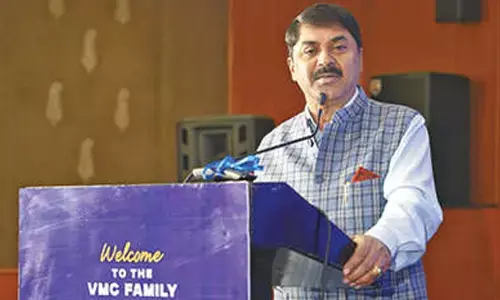Preparing designers for the future of interaction design

Interaction design is at the forefront of the digital revolution, shaping how humans engage with technology.
Interaction design is at the forefront of the digital revolution, shaping how humans engage with technology. As we look toward the future, several trends and advancements will redefine the field, requiring tomorrow’s designers to adapt and innovate continuously. The future of interaction design is rich with possibilities, driven by advancements in AI, AR/VR, VUIs, data analytics, and a growing emphasis on inclusivity and sustainability. Tomorrow’s designers must equip themselves with a diverse skill set and a forward-thinking approach to navigate this dynamic landscape.
India is rapidly becoming a global hub for technology and innovation, and the field of interaction design is no exception. With a burgeoning tech industry, a growing focus on user experience, and a young, dynamic workforce, the future for interaction designers in India looks promising.
India’s IT sector is one of the largest in the world, contributing significantly to the global tech landscape. As per the report of NASSCOM India’s IT industry is projected to reach $194 billion in 2025. India is home to over 50,000 startups, making it the third-largest startup ecosystem globally.
Indian companies are increasingly focusing on user experience to enhance their products and services. The demand for UX designers in India has seen a 70% increase over the last five years. The growth of educational institutions offering specialized courses in interaction design is fostering a skilled workforce. India has over 70 design schools offering courses in interaction design and related fields. Universities and design schools like NID, TDV & IITs in India are incorporating sustainability into their curricula to prepare the next generation of designers.
Future of Interaction Designers
The future of interaction design in India is bright, with numerous opportunities for growth and innovation.
Growing Tech Ecosystem
India’s tech industry is expanding at a phenomenal rate. With cities like Bengaluru, Hyderabad, and Pune becoming major tech hubs, there is a significant demand for skilled interaction designers.
Opportunities:Startups and Tech Giants: Increased job opportunities in startups and established tech companies.
Innovation Centers:Growth of innovation and design centers focusing on user experience and interaction design.
Emphasis on User Experience (UX)
Companies across sectors are recognizing the importance of UX in product success. This shift is creating a strong demand for interaction designers who can create user-centric products.
Opportunities:UX Design Roles: Increased hiring for UX designers, UX researchers, and interaction designers.
Interdisciplinary Roles:Collaboration opportunities with product managers, developers, and marketers to create holistic user experiences.
Advancements in AI and Machine Learning
India is making significant strides in AI and machine learning, with numerous startups and research initiatives in the field. Interaction designers need to be adept at integrating AI into user interfaces.
Opportunities:AI-Driven Design: Creating interfaces that leverage AI to enhance user interactions.
Smart Products:Designing for smart devices and applications that use AI to personalize user experiences.
Expansion of AR and VR
With the global AR and VR market growing, Indian designers are increasingly involved in creating immersive experiences. Industries like gaming, education, and healthcare are adopting these technologies.
Opportunities:Immersive Design Roles: Positions in companies focusing on AR/VR applications.
Cross-Industry Applications:Designing AR/VR experiences for diverse sectors such as retail, tourism, and real estate.
Rise of Voice User Interfaces (VUIs)
Voice technology is gaining popularity, with more Indian users adopting voice assistants like Google Assistant and Amazon Alexa. Designing for VUIs is becoming an essential skill.
Opportunities: Voice Interface Design: Specializing in creating intuitive and effective voice interactions.
Localization:Adapting voice technologies to cater to India’s multilingual population.
Focus on Inclusive Design
With a diverse population and a significant number of people with disabilities, inclusive design is crucial. There is an increasing awareness and implementation of accessibility standards.
Opportunities: Accessibility Design Roles: Specialized positions focused on creating accessible and inclusive user experiences.
Government Initiatives:Collaborating on public sector projects aimed at inclusivity and accessibility.
Data-Driven Design Practices
Big data analytics is becoming integral to understanding user behavior and improving designs. Indian companies are leveraging data to enhance customer experiences.
Opportunities:Data Analytics in Design: Using data to inform and optimize design decisions.
Conducting user research and usability testing to create data-backed designs.
Sustainable Design Practices
Sustainability is gaining traction, and designers are expected to incorporate eco-friendly practices in their work. This trend is likely to grow as environmental concerns become more pressing.
Opportunities:Sustainable Design Roles: Jobs focusing on creating sustainable digital and physical products.
Corporate Social Responsibility:Working with companies committed to reducing their environmental footprint.
The future of interaction designers in India is promising. As the industry evolves, designers must continuously adapt and innovate to stay at the forefront in this dynamic and evolving Industry.
(The author is Director of The Design Village (TDV)




















